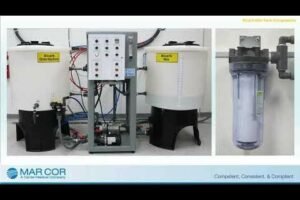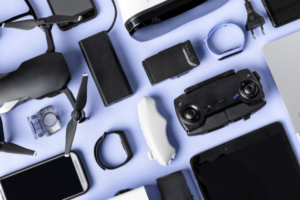The healthcare sector is always changing, and new technologies have a significant impact on how patient care is delivered. Computer vision is one such tool; it’s an area of AI that helps robots read and understand images. field of computer vision focuses on teaching computers to analyze, understand, and make sense of visual data such as photographs, movies, and other media.
Machine learning, pattern recognition, and image processing are only some of the tools it employs for this goal. Recent developments in computer vision have allowed businesses to improve their visual data processing. There have been numerous beneficial effects of this technology in the banking, insurance, and healthcare sectors.
As a result of the enhanced visual analysis provided by computer vision, both diagnosis and therapy are enhanced. Computer vision may help the healthcare business by providing more precise analysis of medical imaging data. Here, we’ll examine how advances in computer vision are reshaping the medical industry. With the use of computer vision, medical professionals may now provide their patients with the highest standard of care. The
The Role of Computer Vision in Improving Medical Diagnosis and Care
The use of computer vision in medical imaging has the potential to revolutionize healthcare by improving the speed and precision with which patients are diagnosed and treated.
-
Using Facial Recognition To Check In Patients
Facial recognition is a method of identifying patients that employs computer algorithms to compare digitized photographs of patients’ faces to their medical information. Facial recognition software can verify the identity of a person by comparing two or more digital photographs of their faces.
In healthcare, this technology has been used for a number of purposes, including the rapid and accurate verification of patient identities during hospital admissions, the reduction of medical errors (patient safety), the prevention of medical identity fraud, the simplification of the registration process, and the restriction of access to restricted areas or data.
-
Computer Vision For Cancer Detection
Computer vision models trained with deep learning have surpassed human diagnosis accuracy on tasks like distinguishing benign moles from malignant ones. For example, due to the similarity between the symptoms of skin cancer and those of other skin conditions, early diagnosis of this disease may be challenging. To combat this, researchers have turned to computer vision technologies that can accurately distinguish between malignant and noncancerous skin lesions.
Many industries now make use of automated processes. Traders use auto bots like Quantum Flash thequantum-flash.com to lessen their chances of making mistakes while trading digital assets. Researchers in the field of artificial intelligence have found several benefits to employing computer vision and deep learning programs for breast cancer diagnosis.
It may help automate the identification process and reduce the chance of human errors. Healthcare computer vision systems may soon be utilized for identifying various forms of cancer, such as bone and lung cancer, because of the fast advancements in technology.
-
Disease Detection At An Early Stage
Some illnesses can only be effectively treated in their first stages. The advent of computer vision technology has allowed for the early detection of symptoms by medical professionals. This has a tremendous impact on the ability to treat people who otherwise may not receive the care they need.
Early disease detection allows physicians to begin treatment with medication or even conduct life-saving procedures sooner. The use of computer vision is proposed to hasten the diagnostic process and improve the efficacy of therapy.
-
The Creation Of Medical Reports
Due to advancements in computer vision, medical imaging data may now be used extensively to improve illness diagnosis, treatment, and prognosis. Computer vision methods allow medical personnel to obtain improved medical data, which may then be utilized for illness prediction and analysis report generation in addition to being analyzed to make a diagnosis and prescribe treatment.
Computer vision may be used by medical professionals to streamline the creation of medical reports. By feeding information from imaging studies such as X-rays, ultrasound, CT scans, and MRI into computer vision algorithms, doctors will be better equipped to assess a patient’s health, foresee the onset of illness, and provide timely care.
-
Computer Vision For The Disabled
The use of computer vision technologies might drastically improve the lives of those with physical or mental limitations. There are a plethora of ways this technology might be used. As an example, computer vision technology may be used to enhance the sensory experiences of those who are blind or have limited eyesight.
This may include helping someone who is blind or has low vision find their way around a new area without assistance, or enabling them to “read” words and visuals that they would otherwise have no means of understanding. Furthermore, computer vision might pave the way for the creation of assistive technology that would enable persons with impairments to manage their surroundings by means of emotions and gestures.
-
Computer-Aided Imaging
The use of computer vision in medical imaging paves the door for interactive, high-definition 3D visualization. The use of deep learning methods in medical image analysis has shown impressive results in recent years. As a result of these advancements, computer vision has become a viable option for healthcare picture processing.
Improved medical diagnostics are now possible with the use of deep learning and computer vision by visually analyzing interactive 3D models. When compared to flat, two-dimensional photographs, 3D models provide much more context. This means that 3D breast imaging powered by cutting-edge computer vision systems, for instance, is more useful for detecting and preventing cancer in its earliest stages.
-
Using AI for Medical Diagnosis
The ability to identify and diagnose illness with the use of medical imaging and diagnostics has grown in prominence in recent decades. Recent developments in computer vision have allowed for quicker and more precise diagnosis in the medical field.
Medical photos may be evaluated for indicators of illness in a fraction of the time and cost using computer vision algorithms, allowing for more accurate diagnosis. By reducing the number of false positives and negatives, computerized or assisted diagnostics help keep healthcare expenses down. To assist doctors in detecting malignancy in small tumour changes, for example, image recognition algorithms have shown to be very effective.
-
Automatic Tracking Of Health Statistics
The usage of AI and computer vision technologies is allowing for the automatic tracking of health statistics. As a result, smart systems keep tabs on a variety of health indicators across time. Health indicators like heart rate, steps taken, calories consumed, quality of sleep, and more may all be automatically determined using artificial intelligence camera technology.
Patients may learn more about their health and treatment options by keeping tabs on their chronic diseases with the help of modern technologies. Artificial intelligence’s ability to discern trends over time will help physicians better monitor their patients’ conditions.
-
Precision in Diagnosis
By analyzing medical imaging data like X-rays, MRI, and CT scans, computer vision lets doctors spot illnesses early and provide precise diagnoses. In order to increase the accuracy of illness detection, computer vision algorithms are being trained on vast datasets of medical pictures. They have the ability to recognize complex patterns, which allows for better diagnosis and less room for error.
-
Specialized Care
Using computer vision for the detection and analysis of medical imaging data is the primary use of this technology. By correctly analyzing medical photos, physicians and other medical professionals may tailor treatment regimens to each individual patient. Analyses of medical images performed using computer vision may point clinicians on the right path in terms of therapy.
-
Innovative Medical Training
Computer vision has several applications in medicine, including diagnosis and the education of medical professionals. The training of modern surgeons includes more than just hands-on experience in the operating room. Instead, surgical platforms based on simulation have developed as a reliable medium for teaching and testing surgical proficiency. Through the use of surgical simulation, students may practice their surgical abilities before ever entering the operating room. They may practice on simulated patients and get constructive criticism before operating on real ones, improving their knowledge of patient care and reducing surgical errors. Measures of activity, detection of frantic movement, and analysis of time spent in certain regions may all be utilized by computer vision to form an overall assessment of the surgery’s quality.
-
Remote Monitoring
When attending to critically ill patients, medical staff must use extreme caution, particularly when monitoring them from close quarters. Remote monitoring of patients, even those in critical condition, is possible with the use of computer vision systems. In addition to bettering patient outcomes, this may also decrease the likelihood of infection.
Bottom Line
Computer vision in the medical sector has the potential to change diagnosis and therapy by properly interpreting the data provided by diverse medical pictures. This may help medical workers provide better care, ultimately saving more lives.
This AI-based system reads images in real-time using sophisticated algorithms to spot disease markers. When used correctly, computer vision in medicine has the potential to speed up the diagnosis process, improve accuracy, and allow doctors to prescribe more targeted therapies.
Computer vision has progressed to the point where it can assist with a variety of medical procedures and cover a wide range of applications. As a result of these advancements, an increasing number of professionals may now benefit from a wide range of opportunities.












